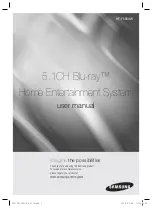
OPC90 Server
OPC_STATUS_FAILED is returned when the “indicate fault when CIU bad”
option is enabled and CIU communication is completely lost.
OPC_STATUS_NOCONFIG is returned when the database has not been setup
yet or something is preventing OPC90 from loading its database.
OPC_STATUS_TEST is returned when OPC90 simulation is enabled. This status
g sequence of events
etween normal operation and when errors occur. Finally, the ability to include
ults during operation, it obviously can’t perform a graceful disconnect from
onitoring for the absence of GetStatus messages that clients
PC90.
Setting “abandon dead client” causes OPC90 to give up memory associated with
a declared dead client as detected by either of the two dead client monitoring
options.
5.4 View
lows selection of monitor mode, status bar, startup in
able
is an indication the data being received is not live information (its being
simulated) and is of a test nature. The “indicate server running when simulation
enabled” option can be set to request OPC_STATUS_RUNNING to be returned
when simulation is enabled.
Logged messages include the time of the log (millisecond resolution) along with
the client number (or name if the client sets its name) for which the error
occurred. In addition to OPC errors, successful read and write OPC operations
can be included in the log. This is useful for constructin
b
OPC function tracing can be enabled for all, or specific functions supported by
OPC90. OPC function tracing can be used to log the time when a function is
called and the time when it returns to the client. This is a useful feature when
trying to track down problems related to DCOM and network communication.
OPC90 includes logic that can attempt to detect dead clients. If an OPC client
fa
OPC90 wasting memory resources. The dead client monitoring section can be
used to enable two types of dead client detection logic.
The first is faults that occur when OPC90 tries to send OnDataChange messages
to the dead client. Error responses to these updates are an indicator that the
client has faulted.
The second is m
typically send to servers. Do not set this option if there are a mixture of clients on
the same PC running OPC90 and external PCs. It is ok to set if all clients are on
the same PC as OPC90 or all clients are on external PCs to the one running
O
The view menu option al
runtime and run as service options. The following picture shows these avail
View menu items:
The RoviSys Company
Version 7.0
Page 28
















































